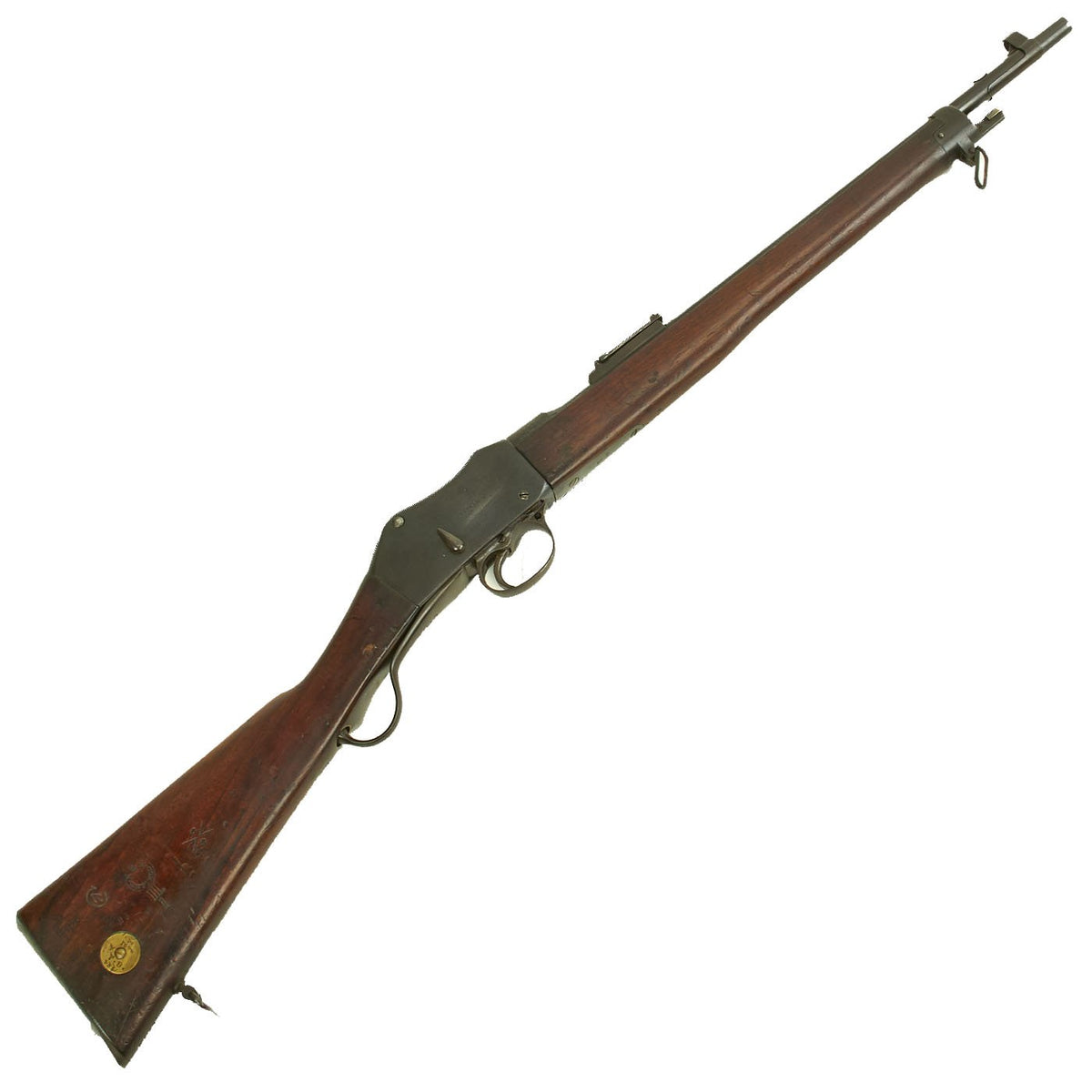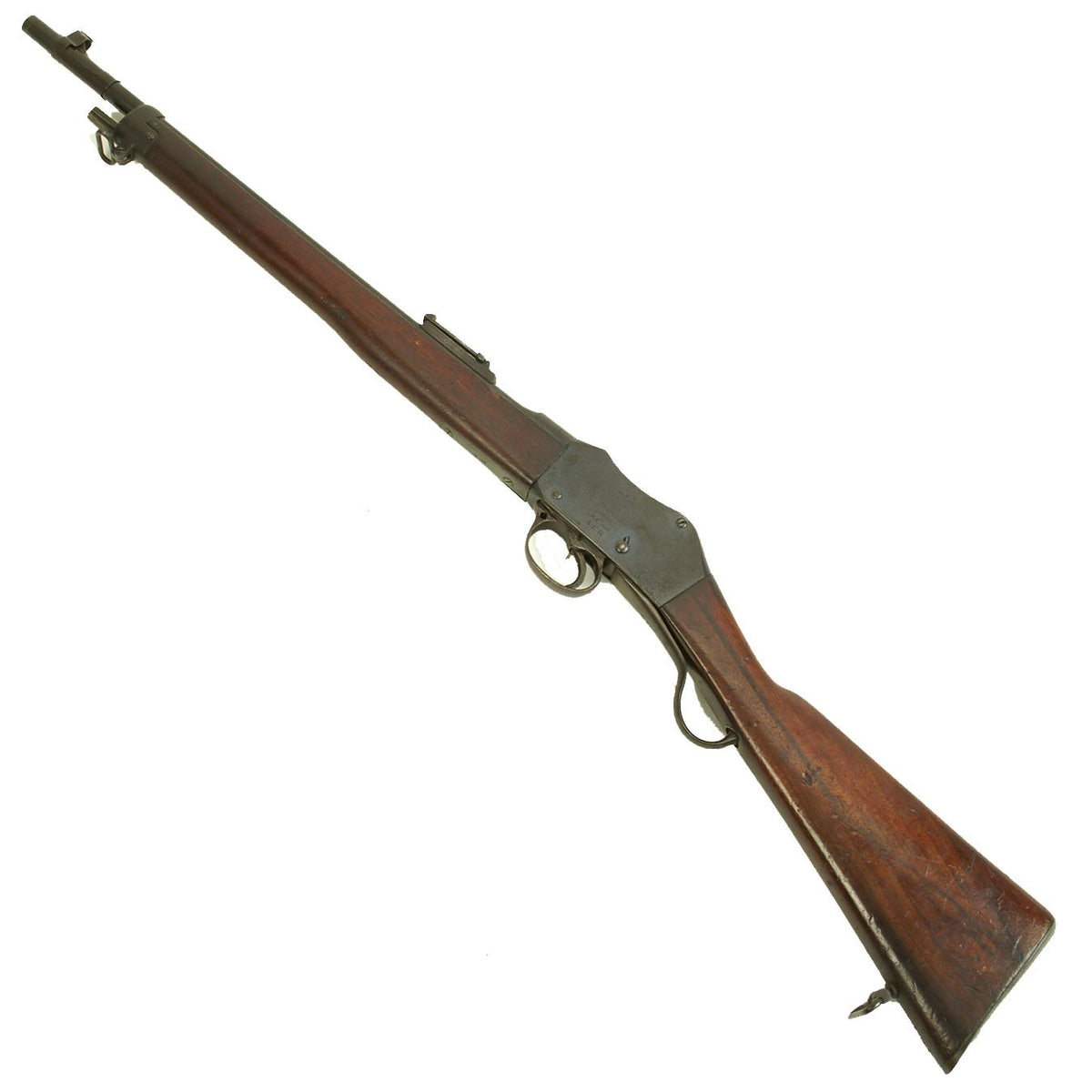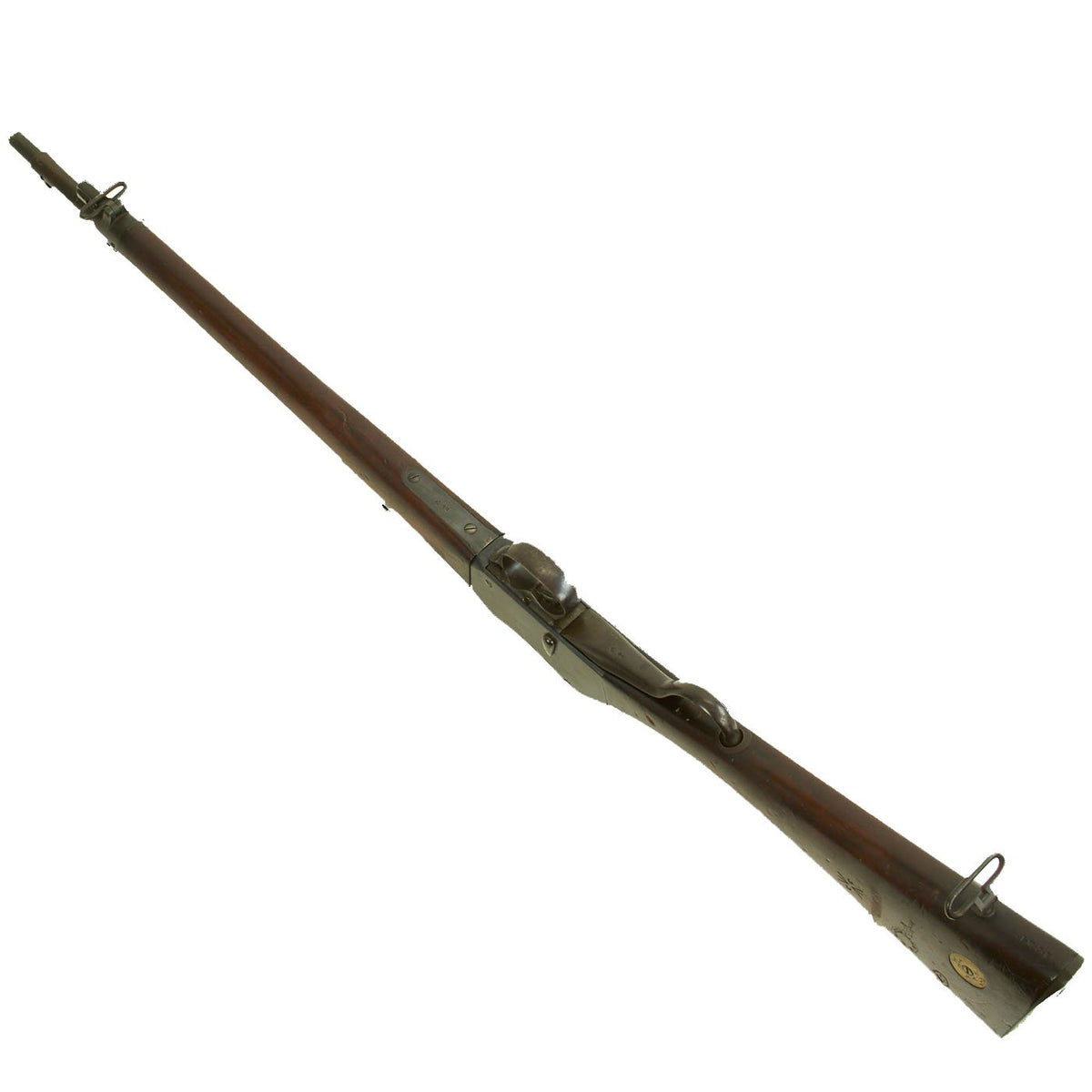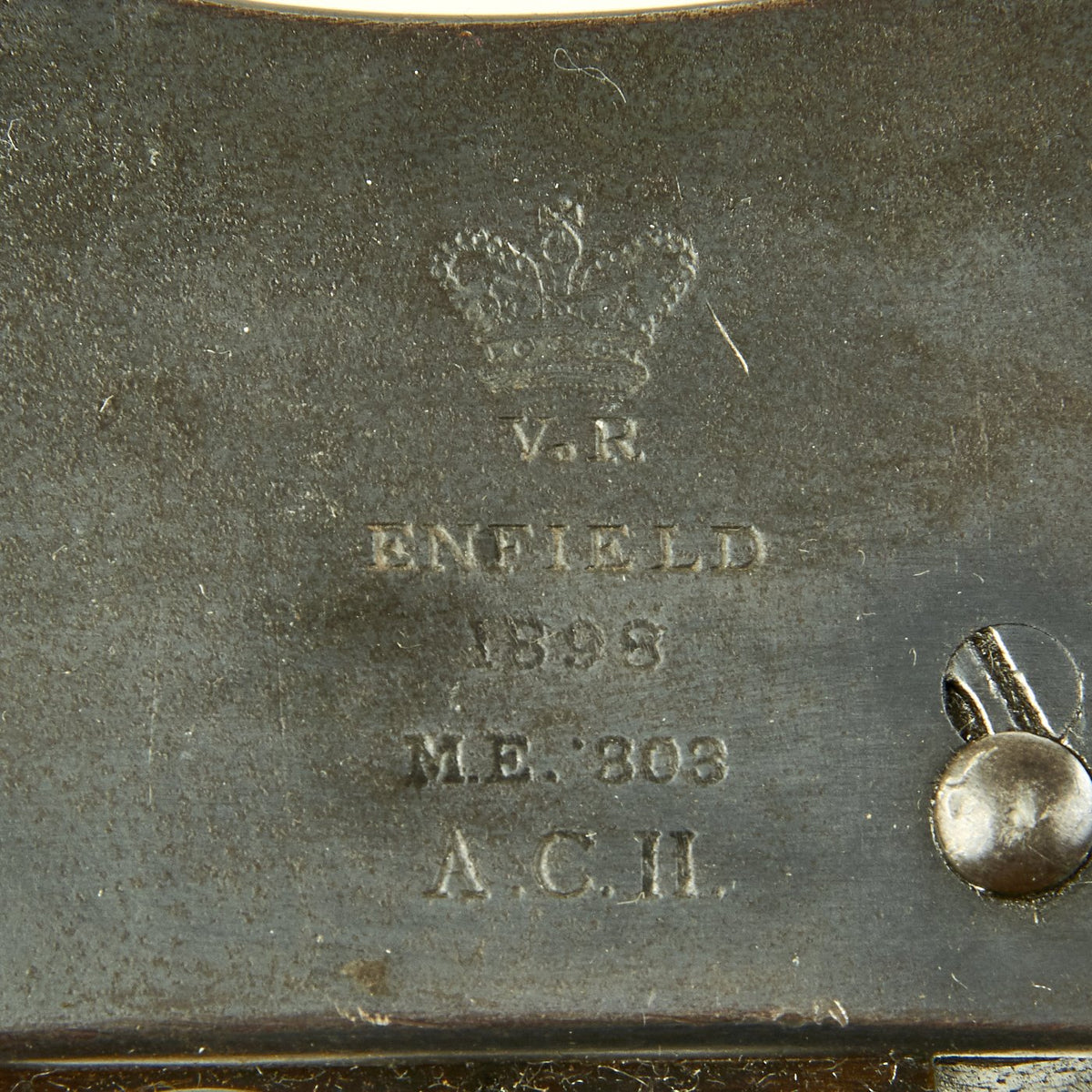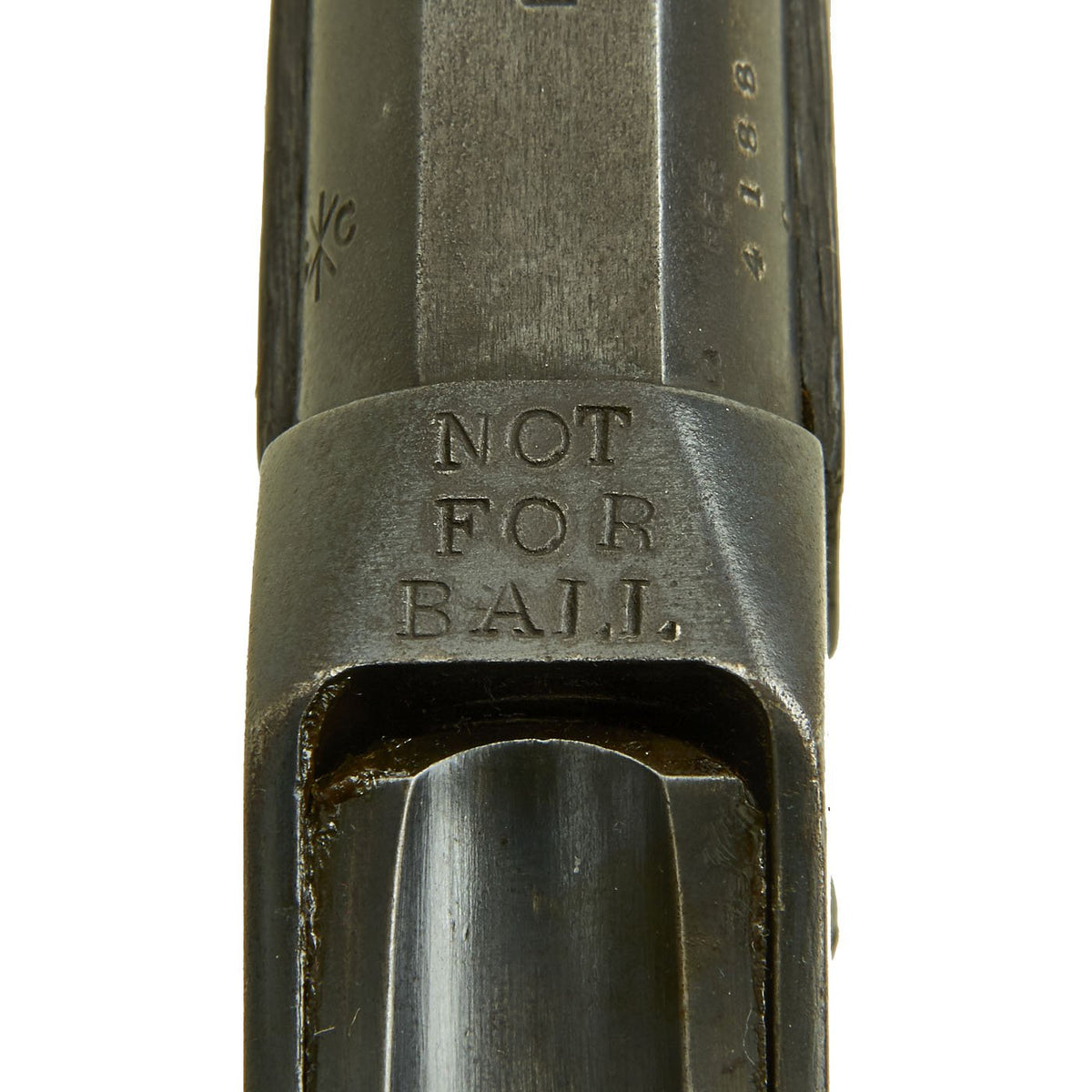Original British Martini-Enfield .303 A.C.II. Artillery Carbine marked “Not For Ball” – Dated 1877 and converted 1898 Original Items
$ 1.595,00 $ 398,75
Original Item: Only One Available. The Martini-Enfield Carbine was effectively a Martini-Henry Carbine, rebarrelled to .303 and with a new extractor installed. This was far more economical for rear echelon troops than making a new purpose made weapon.
Originally (from 1889) Martini-Henry conversions used Metford rifled barrels (and were known as Martini-Metford rifles), which were more than suitable for the first .303 cartridges, which used black powder as a propellant. However, these wore out very quickly when fired with cordite/nitrocellulose cartridges (introduced in 1895) and so in 1895 the Enfield rifled barrel was introduced, which was much more satisfactory and suitable for use with “modern” (smokeless) ammunition.
The Martini-Enfield was in service from 1895-1918 (Lawrence of Arabia’s Arab Irregulars were known to have used them during the Arab Revolt of 1916-1918, along with any other firearms they could acquire), and it remained a Reserve Arm in places like India and New Zealand until well into World War II.
Martini-Enfield carbines were manufactured/converted by:
– R.S.A.F. (Royal Small Arms Factory), Enfield Lock
– L.S.A. Co (London Small Arms Co)
– B.S.A. & M Co (Birmingham Small Arms & Metals Co, later simply BSA)
– H.R.B. Co. (Henry Rifle Barrel Co, later went out of business and taken over by Blenheim Engineering)
– N.A.&A. Co (National Arms & Ammunition Co)
The original manufacturer information, would be stamped onto the right side of the action, while the left side would have information regarding the conversion. This example is marked on the right action with original maker information, however it is unfortunately mostly faded away, with only traced of the royal cypher. Fortunately, thy maker and date are still visible:
ENFIELD
1877
The left side is marked with the conversion information, which is much clearer:
(Crown)
V.R.
ENFIELD
1898
M.E. ‘303.
A.C.II.
This started life in England as a .577/.450 Martini in 1877, made by the Royal Small Arms Factory at Enfield Lock, just in time for the African Campaigns of the late 1870s and early 1880s. In 1898, again in England, it was reconfigured by RSAF Enfield into a Carbine and was converted to .303 caliber as an M.E. Artillery Carbine Mk II. This particular carbine has lots of markings stamped into the wood as well as the metal, which show the long history and travels that it has made. It has a “Broad Arrow in C” marking, indicating that it was accepted at arsenal in Canada. There is also a R.C.M.I. stamp, most likely for the Royal Canadian Military Institute, where it was no doubt used for training and parade purposes.
At some time this Carbine was stamped NOT FOR BALL on the front of the receiver, indicating that it had been relegated to training and blank firing only. However, examination of the bore shows that it is bright with clear lands and grooves, and almost no wear. The usual reason for this stamping a perfectly good rifle this way was that it allowed the Regimental Armorer to write the weapon off and apply for a brand new often far better replacement rifle, by then an S.M.L.E. No.1 MkIII.
In very nice condition this model saw service in throughout the British colonies, it is fitted to accept the P-1888 Lee Metford knife bayonet to attach directly under the barrel. The stock is in good condition, though does show age. The stock rondel on the right butt stock is present, and fully legible, as are lots of markings on the entire carbine. It even has a very nice steel front sight protector installed.
A wonderful piece of British and Firearms history! Ready do display.
Specifications-
Year of Manufacture: 1877 – converted 1898
Caliber: .303 British
Cartridge Type: Centerfire Cartridge
Overall Length: 21 Inches
Overall Length: 37 Inches
Action type: Falling-Block
Feed System: Single Shot
Fast Shipping with Professional Packaging
Thanks to our longstanding association with UPS FedEx DHL, and other major international carriers, we are able to provide a range of shipping options. Our warehouse staff is expertly trained and will wrap your products according to our exact and precise specifications. Prior to shipping, your goods will be thoroughly examined and securely secured. We ship to thousands clients each day across multiple countries. This shows how we're dedicated to be the largest retailer on the internet. Warehouses and distribution centres can be located throughout Europe as well as the USA.
Note: Orders with more than one item will be assigned a processing date depending on the item.
Before shipping before shipping, we'll conduct a thorough inspection of the items you have ordered. Today, the majority of orders will be delivered within 48 hours. The delivery time will be between 3-7 days.
Returns
The stock is dynamic and we cannot completely manage it because multiple stakeholders are involved, including our factory and warehouse. So the actual stock may alter at any time. It's possible that you may not receive your order once the order has been made.
Our policy is valid for a period of 30 days. If you don't receive the product within 30 days, we are not able to issue a refund or an exchange.
You can only return an item if it is unused and in the same state as the day you received it. You must have the item in its original packaging.
Related products
Uncategorized
Uncategorized
Uncategorized
Armoured Fighting Vehicles of the World: AFVs of World War One (Hardcover Book) New Made Items
Uncategorized
Uncategorized
Uncategorized
Uncategorized
Uncategorized
Uncategorized
Uncategorized
Uncategorized
Uncategorized
Armored Burgonet Helmet & Polearm from Scottish Castle Leith Hall Circa 1700 Original Items
Uncategorized
Uncategorized
Uncategorized
Band of Brothers ORIGINAL GERMAN WWII Le. F.H. 18 10.5cm ARTILLERY PIECE Original Items
Uncategorized
Uncategorized
Uncategorized
Uncategorized
